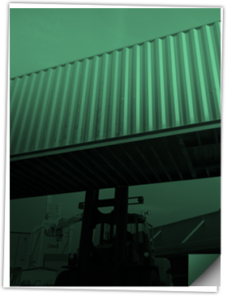Featured Headlines:
CBP: The Aim is Bonds, Customs Bonds
US Partnership Finds Common Ground Controls
CBP Officials Apply a FIRMS Hand in ACE
Pennsylvania’s Perilous Pile-Up
Rubymar's Red Sea Resting Place
CBP: The Aim is Bonds, Customs Bonds
- Bonds are used as a safeguard in a wide range of industries, governments and agencies around the world. Just as our neighbors across the pond employ MI6 Agent 007 (allegedly that is), US Customs and Border Protection (CBP) officials deploy a different kind of Bond to help protect and safeguard our national trade interests.
- The Office of Trade recently issued the long-awaited and highly-anticipated changes to CBP’s 30-year old internal directive for determining bond amounts.
- First issued in 1991, the Monetary Guidelines for Setting Bond Amounts has been “under construction” since 2020, when officials launched an interagency probe to ensure our existing policies and procedures are a reflection of the current times.
- Per CSMS #59402411, the guidance “serves to address gaps, to clarify what CBP and the trading public are responsible for when setting and maintaining bond coverage, and make clear what factors are considered by CBP in setting a required bond amount in particular cases.”
- Here are some of the notable updates from A Guide for the Public: How CBP Sets Bond Amounts (Publication #3569-0224) worth highlighting:
- Adds a new section addressing eBond transmissions.
- Adds a new table to Appendix A to identify special classes of merchandise subject to other agency requirements that pose a threat to public health and safety, environmental safety, or have other restrictions and provides a list of the required bond amounts.
- Sets all continuous bonds in increments of $10,000 (up to $100,000); and $100,000 for larger bonds (previously only applied to Activity Code 1 bonds).
- Increases the minimum C3 bond amount from $25,000 to $50,000.
- Increases the minimum C4 bond amount to $50,000 per FTZ activated location.
- The full guidance, as well as a Summary of Changes (1991 Directive to 2024 Public Guidance), can be found on the CBP Bonds page.
- Questions related to the updated guidance should be directed to the Office of Trade, Trade Policy and Programs, Drawback and Revenue Branch at [email protected].
US Partnership Finds Common Ground Controls
- The US Department of Commerce’s Bureau of Industry and Security (BIS) began implementing a series of strict export controls on February 24, 2024 to further restrict Russia’s access to certain technologies and items related to the war in Ukraine.
- Prior to this action, officials from the European Union (EU), United Kingdom (UK), United States (US) and Japan partnered up to identify 50 “common high priority items” sought to be procured by Russia for its weapons programs.
- BIS published the Common High Priority List (CHPL) to highlight the heightened risk of these items being diverted illegally to Russia. The CHPL is organized by each item’s six-digit Harmonized System (HS) code and is broken down into the following tiers:
- Tier 1: Items of the highest concern due to their critical role in the production of advanced Russian precision-guided weapons systems, Russia’s lack of domestic production, and limited global manufacturers.
- Tier 2: Additional electronics items for which Russia may have some domestic production capability, but a preference to source from the United States and its partners and allies.
- Tier 3.A: Further electronic components used in Russian weapons systems, with a broader range of suppliers.
- Tier 3.B: Mechanical and other components utilized in Russian weapons systems.
- Tier 4.A: Manufacturing, production and quality testing equipment for electric components, circuit boards and modules.
- Tier 4.B: Computer Numerically Controlled (CNC) machine tools and components.
- These restrictions also apply to Belarus in response to its continued support of Russian aggression.
- Please be advised that the list is subject to periodic updates as new information becomes available.
- Worried that your supply chain might be affected by the latest announcement? Reach out to our Compliance Crew to see if your products are caught in the line-of-fire today.
CBP Officials Apply a FIRMS Hand in ACE
- Did you know that CBP initiated an Automated Commercial Environment (ACE) deployment on March 2 that requires importers to submit Facilities Information and Resource Management System (FIRMS) codes when arriving in-bond for Non-Air?
- For Manifest:
- Ocean and Rail Manifest has added a validation in the Electronic Data Interface (EDI) and ACE Portal Processing to ensure the FIRMS code is provided, is valid, and is contained in the in-bond arrival port.
- For FTZ:
- Updated an existing business rule validation to ensure the FIRMS code was provided on an FZ-I, Goods Arrived at the in-bond level submission for NON-Air only.
- The FTZ CATAIR will be updated to reflect these changes.
- For Truck:
- Truck added validations in the Truck Trade Portal and EDI processing to ensure the FIRMS code is provided, is valid, and is contained in the in-bond arrival port.
- For Air:
- At this time in-bonds originating in Air Mode of Transportation (MOT) will not be affected by this FIRMS code validation update, regardless of the in-transit MOT.
- CBP is working to deploy this validation across all MOTs at a future date.
- This validation is currently deployed within the Certification (CERT) Environment, but will be pushed into Production once the certification process has been finalized.
- CBP officials reminded the trade community that it is “critical that all facilities that receive bonded shipments have a valid FIRMS code assigned,” per CSMS #18-000013. “Operators of bonded facilities are advised to confirm the custodial bonds assigned to their facilities are current and active,” it stated.
- For additional information regarding this announcement, please refer to CSMS #59651310.
Cargo Crime
- Last year, we peeled back the curtain on the haunting rise of domestic cargo thefts. This sinister wave has now spilled over into loading docks, trailer yards, and even the digital frontier.
- In response, shippers are being called to fortify their arsenals with digital innovations, leveraging tools like Shapiro 360 for electronic bills of lading and shipment tracking.
- A recent survey conducted by Tive revealed a stark reality: 48% of logistics professionals reported monthly losses of at least $5,000 and $10,000, a testament to the rampant damage and theft plaguing the industry.
- The last 12 months witnessed over 600 cargo thefts, revealing an audacious appetite among thieves. Even energy drinks have become coveted loot, seemingly fueling the culprits’ caffeinated ambitions to set new records in cargo crime for 2024.
- Cargo theft continues to evolve with thieves not just growing bolder but perhaps smarter with their newfound caffeinated boost. The modern marauder’s toolkit now includes stealing identities of legitimate carriers to orchestrate heists.
- Move over Dom Toretto because a recent example has come to light with a former Ohio-based trucking owner pleading guilty to stealing six figures worth of goods from sealed trailers. He would direct trucks to a warehouse where locks would be unbolted, goods stolen, and then the locks re-bolted without any evidence of the crime.
Pennsylvania’s Perilous Pile-Up
- The Keystone State is once again making headlines for railway mishaps. Following a hazardous materials derailment just a few miles West of the Pennsylvania border last year, three trains recently collided in Lower Saucon Township, PA.
- Investigations by the U.S. National Transportation Safety Board are still underway and are expected to continue for the next several days as they conduct interviews and gather information to assist in determining the cause of the accident.
- The site has been released to Norfolk Southern, which will be responsible for cleanup. Crews and contractors are already on-site handling cleanup and the restoration of the track.
- Preliminary reports have determined that an eastbound train hit a train stopped on the same track with the wreckage from the striking train spilling onto an adjacent track and hitting a 3rd westbound train.
- No official cause has been released but at the moment, a railway workers group is blaming Norfolk Southern for poor management.
FMC Cooks Up Fresh D&D Rules
- The Federal Maritime Commission (FMC) has cooked up some fresh rules for detention and demurrage billing, making sure port truckers aren’t left holding the bag…or in this case, the unexpected bill.
- Cargo receivers, on the other hand, find themselves in a culinary conundrum, potentially eating fees for a shipment feast they didn’t even RSVP to.
- Marine terminals may be feeling like a fish out of water after the FMC tossed their pleas for exemption out with the dishwater.
- This decision cranked up the heat even higher as the D&D billing window has been reduced to a mere 30 days, while also adding a bit of spice by allowing consignees to be served a piece of the billing pie.
- To simmer down potential backlash, there’s a 90-day cooling off period baked in, giving everyone time to marinate on the changes.
- Interested in learning more about the FMC’s evolutionary D&D philosophy? We’ve got you covered…Check back in the coming weeks for a deeper dive into this complicated realm!
Sea-Air Fanfare
- The new Jason Bourne movie starring Hapag Lloyd and Maersk, The Gemini Cooperation, features a titillating plot centered around the hub and spoke model (a giant form of the game LCL consolidators have been playing since 1956).
- Not to be outdone, airlines and forwarders are amassing critical mass en masse to feed sea-air services primarily to connect the battered supply chains between Asia and Europe.
- Sophisticated readers of this world-famous gazette already know about the Red Sea violence, and wars in Israel and the Ukraine, but with ocean schedule reliability dipping below 40%, even Tesla had to suspend production in Germany.
- Enter sea-air, mon frere!
- Fun facts: sea-air routings average 40% lower costs than “pure air”, are 40-60% faster than sea freight, and lower emissions by 30% vs. traditional airfreight.
- To tickle your curiosity, imagine containers of ocean freight moving slowly but steadily away from Asia’s crowded, expensive airports and chugging along to Dubai or even Los Angeles. There, the seasick cargo is hurried along and packed like sardines in huge air freighters bound for the capable and greedy hands of manufacturers around the globe.
- With intricate planning, even e-commerce businesses can take advantage of sea-air (though Amazon is not allowed because I said so).
- Speaking of e-commerce, several airlines have indicated that from East Asia, e-peddlers now represent more than half of all cargo profits! We point to the Red Sea calamity to explain higher air demand, but it is more about the e-comm insanity!
- Looking at airfreight globally in February, the numbers still make no sense, but what else is new? Year-on-Year (YoY) demand is up 11%, supply is up 5%, and the dynamic load factor of 60% was higher than any such reading in 2023. So, rates must be up, right?
- Wrong! Rates were down 14% YoY for no apparent reason whatsoever. What is compelling and worth noting is that rates were up 2% from January to February, a very rare trend line indeed.
- So, like a Bourne flick, the airfreight market is an adventure story with twists and turns we may or may not have seen before… pass the popcorn!
- Let’s hear about your Sea-Air fanfare! Reach out to Shapiro’s Freight Experts to chat about your services today!
GPA Growth
- Thanks to a booming population and a flurry of new manufacturing and logistics operations, Georgia’s trade traffic is thriving (say that one three times fast).
- The Port of Savannah was bustling in February, handling 451,670 TEUs which is a 14.4% growth compared to last year.
- Loaded imports jumped a whopping 19%, while exports also saw an impressive 10% increase.
- As a result, the Mason Mega Rail Terminal saw its volumes increase by 39%–marking a new record high for the month of February.
- The Appalachian Regional Port also hit its own February record, offsetting 710 truck miles on Georgia highways by offering an energy-efficient alternative to and from the Port of Savanah.
Rubymar's Red Sea Resting Place
- The general-cargo ship Rubymar met a watery grave in the Red Sea, marking the Israel-Palestine conflict’s first victim of the high seas after being struck by a Yemeni missile, accusing it of British ties.
- After being hit, the vessel sought refuge but was turned away by all ports for fear of reprisals.
- The attack, claimed by the Houthis, comes with stark warnings of more to come against ships with British ties, escalating already intense tensions while pointing fingers squarely at the group for the loss.
- The Rubymar was laden with 18,000 tonnes of fertilizer, sparking fears of an ecological disaster by threatening marine life and potentially also impacting drinking water sources in Saudi Arabia.
- Fertilizer spillages have previously been linked to deaths of fish, coral, and other marine life which would spell disaster for Yemen as the fishing industry provides Yemen’s largest exports.
Panama Puzzle Persists
- Liner operators are scratching their heads over Maersk’s daring move to use land transport to circumvent the Panama Canal. They’re wary of following in Maersk’s footsteps as it could cause their costs to rise by 30%.
- In January, the canal finally increased the number of daily transit slots from 18 to 24, but this still remains 33% lower than before the crisis.
- In a bold move, Maersk announced its OC1 service would call at the port of Balboa in Panama on the Pacific side, discharging boxes there.
- THE alliance has cracked open their calculator and turned their nose up at the land price, saying the cost of land leapfrog just doesn’t add up.
- Using the land route would shorten average transits from Asia Base Ports to 30 days but will cost an additional $2,000.



